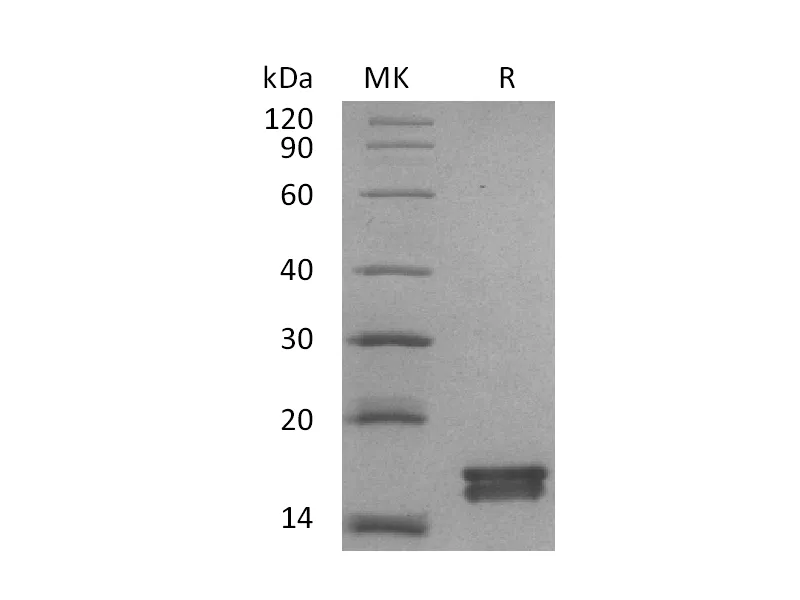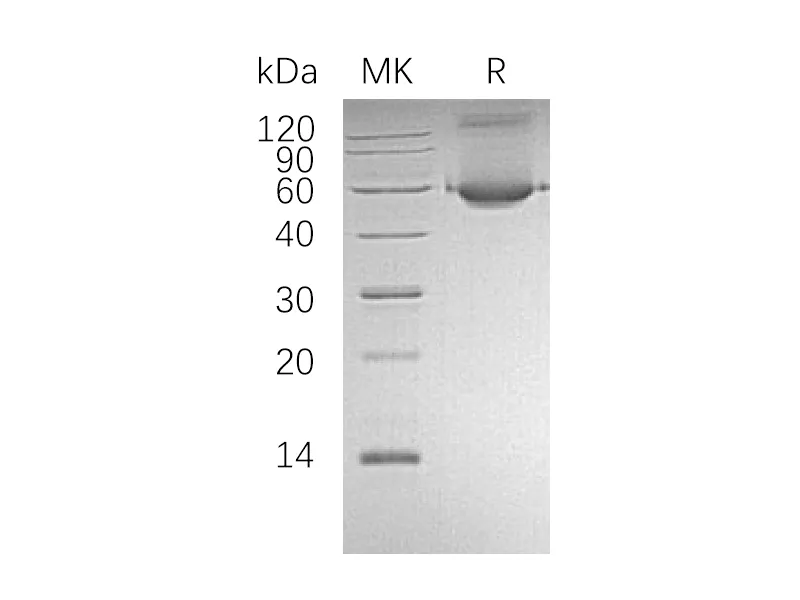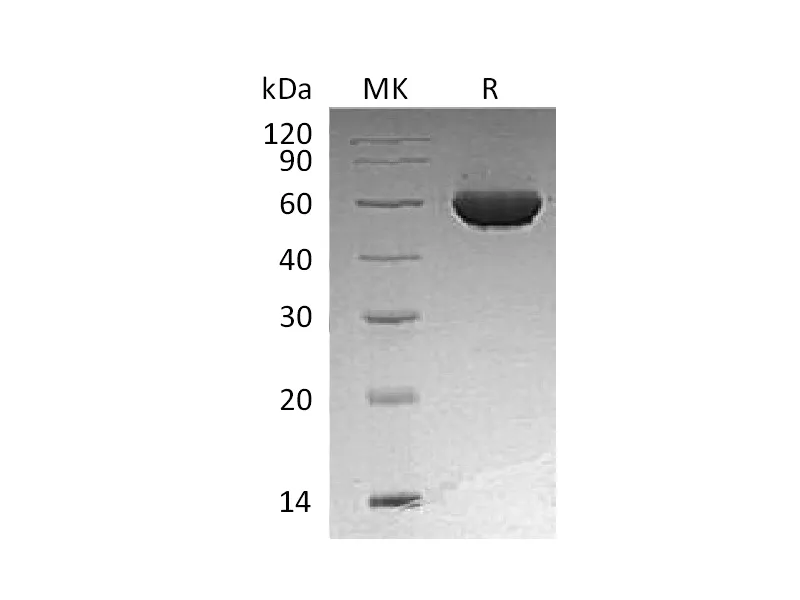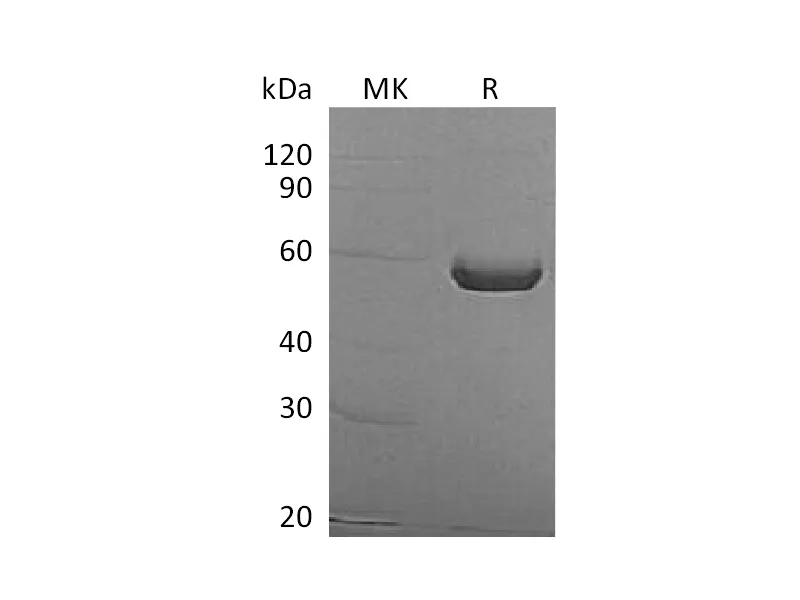Alternative Names
Hyaluronan-binding protein 2; Factor VII-activating protease; Factor seven-activating protease; Hepatocyte growth factor activator-like protein; Plasma hyaluronan-binding protein
Background
Hyaluronan-binding protein 2(HABP2) is an extracellular serine protease which binds hyaluronic acid. It secreted as an inactive single-chain precursor and is then activated to a heterodimeric form, which consists of a 50 kDa heavy and a 27 kDa light chain linked by a disulfide bond. HABP2 is involved in cell adhesion, it can cleave the alpha-chain at multiple sites and the beta-chain between Lys-53 and Lys-54 , but not the gamma-chain of fibrinogen. As a result of this, it does not initiate the formation of the fibrin clot and does not cause the fibrinolysis directly. It does not cleave prothrombin and plasminogen but converts the inactive single chain urinary plasminogen activator to the active two chain form, activates coagulation factor VII.
Note
For Research Use Only , Not for Diagnostic Use.




